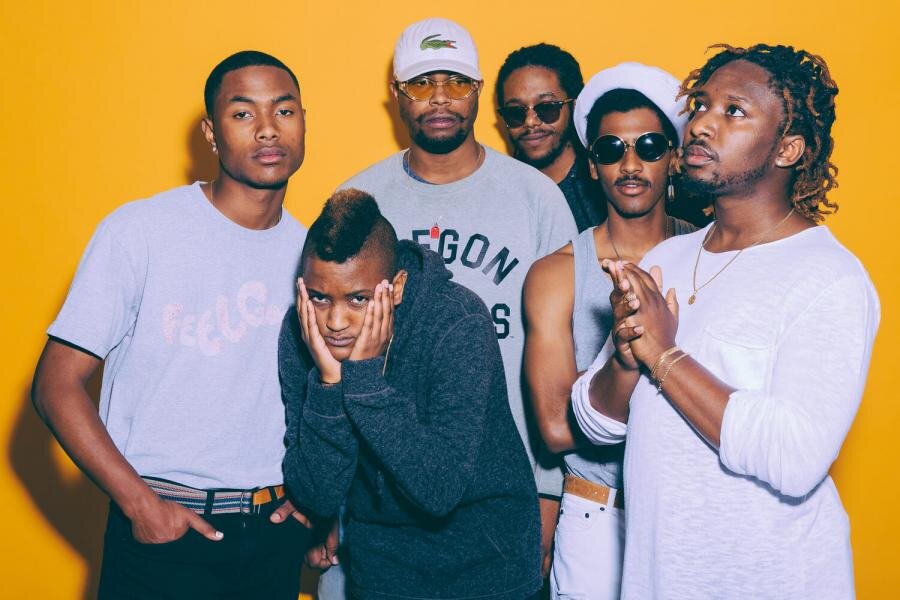The Internet Finds Its Crowd In New Orleans

The Internet's crowd at the House of Blues was more enthusiastic and dedicated than it seemed even the band expected.
I saw The Internet almost exactly one month before its performance in New Orleans when it opened for Gorillaz in Chicago, and I was one of the only people around me who knew the band’s music. That night, I got side eyes for knowing and singing along to its songs, but at the House of Blues recently, The Internet’s fan base was devoted. The outpouring of love and energy was unlike anything I’d ever seen, and it was clear that band members were surprised as well.
The entire set had an aura of comfortable sensuality to it, inviting audience members to settle in with themselves and whoever they came with. The stage was set up like a living room, and the lighting set the mood perfectly, an array of blues, greens, pinks, and purples highlighting their skin in the most sensual, delicate ways. The venue felt like a brief home.
The Internet is an offshoot of the Odd Future hip-hop collective, which sprang to controversial life in 2007 before starting solo careers for Tyler the Creator, Frank Ocean, Earl Sweatshirt, and Syd the Kid, who now performs as simply Syd with The Internet. She has the voice of a classic R&B singer, but she’s an out lesbian who prefers short hair and an androgynous wardrobe. With the voice of a soul singer and the aesthetic of a heartthrob, her fans are constantly swooning.
During the first song, Syd stood on the table set up in the middle of the stage for “Come Together” while the crowd sang along without missing a beat. During the breakdown, Syd got down and danced for the audience, and the crowd treated her with a boyband-esque excitement. She had obvious, star-time charisma but led the group with a humble confidence. The group responded by leaning into its neo-soul/ disco vibe, even projecting a disco ball on the screen behind them at points throughout the show.
At times it felt like The Internet was unprepared for the enthusiasm of this particular crowd, which was majority young and Black. The tight set was built for fans who knew less of their work, but when they started playing the first few notes of “Special Affair,” the audience took control of the song for a moment, leading in with a synchronized “Ay, ay, ay,” then singing the first couple of lines before Syd had the chance to. When Syd began the song for real, the audience joined in, repeating the lines over again, and the band seemed overwhelmed by how well the crowd knew and sang their work—in tune—for much of the set.
Planned efforts to involve the audience that were built into the set actually backfired as they slowed down the New Orleans crowd. Immediately following “Special Affair,” the band moved into “Just Sayin / I Tried,” a song that had a built-in call and response. The crowd was supposed to repeat back, “You fucked up” during each chorus, but people were instead singing along to the rest of the song as well, and the timing never seemed to fall right. The crowd seemed slightly less into the song because of this, but quickly found its footing again when left to its own devices.
It was clear that this level of engagement was something The Internet didn’t experience often, if ever. The air in the room felt uniquely intimate, not just because that was the way the set was constructed but because the audience returned this intimacy back to the band.
The set rounded out with “Girl,” and the lighting on the stage and in the rest of the venue was all blue, with the crowd singing along on beat and in pitch, the entire place a cohesive unit working as one. By the end, it felt as though the audience and the band were walking away equally transformed by the energy of the other, a mutual exchange of love and enthusiasm to take away from the venue.






